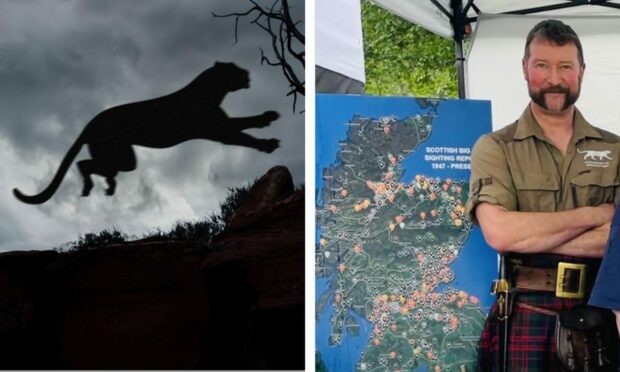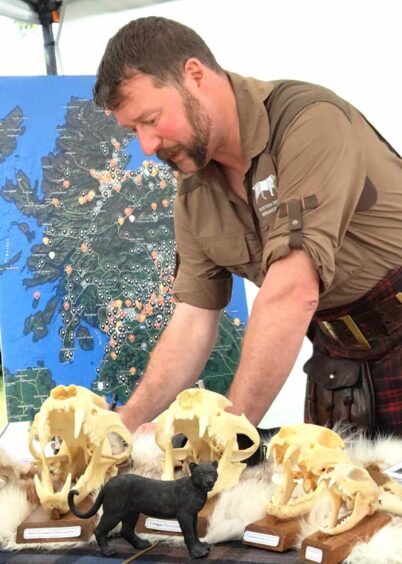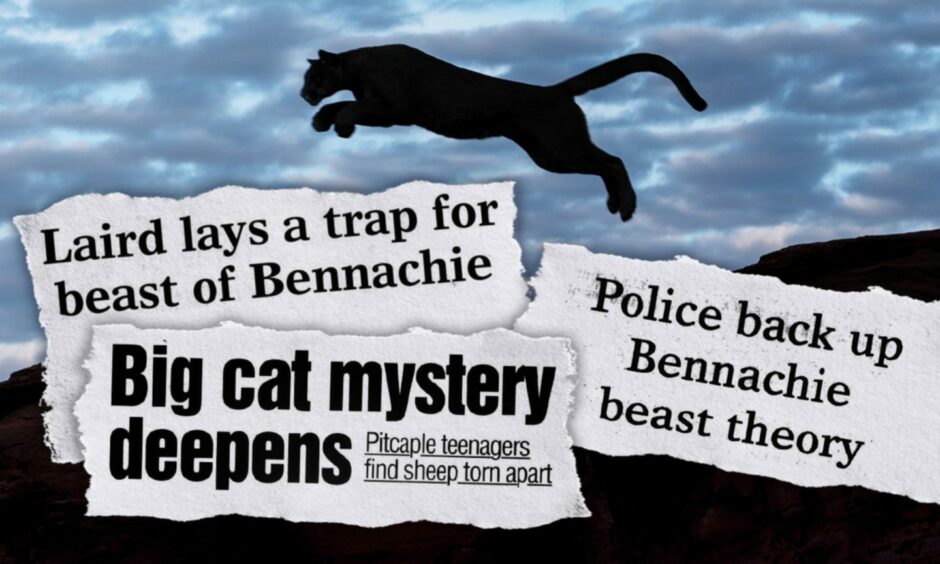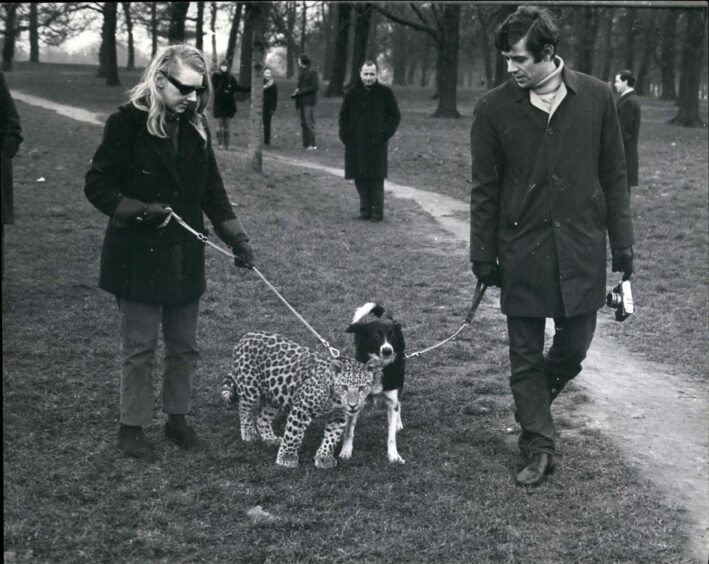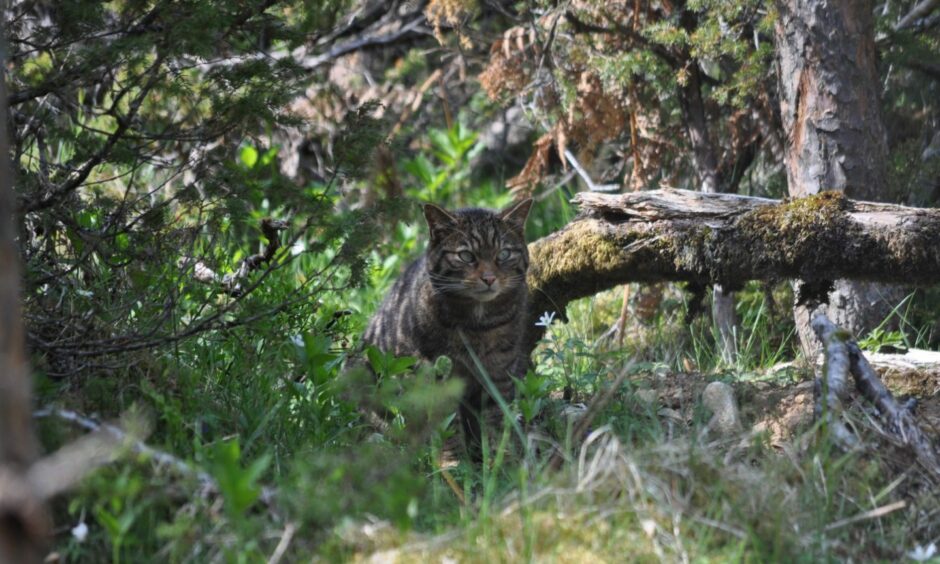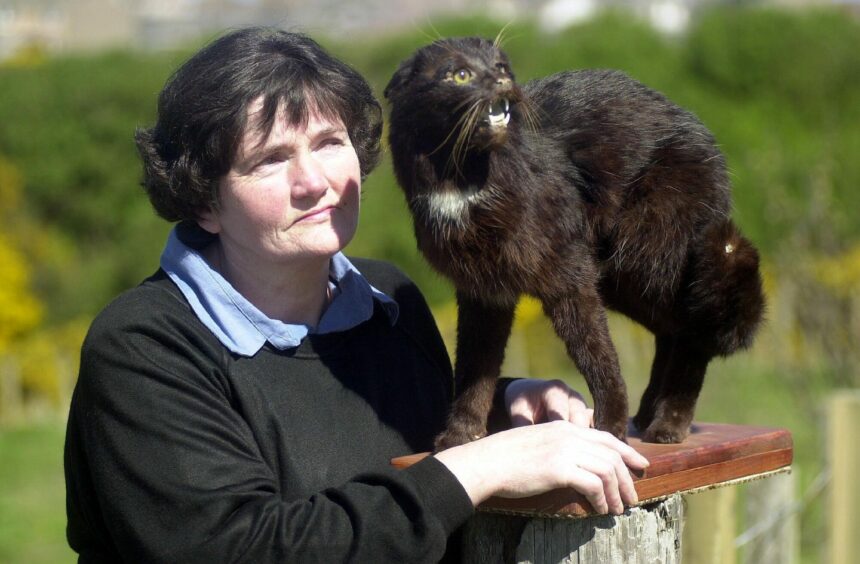A big cat expert has said that Moray and Aberdeenshire have been hotspots for sightings.
Paul Macdonald, 50, who runs the Scottish Big Cat Research Team, has been working on mapping every sighting location.
He became “hooked” on searching for big cats after his first sighting of one in the late 80s while he was going to school at Glenfinnan in the Highlands.
Sightings of puma and leopard-like creatures stalking Scottish hills and glens have been reported for decades but little evidence has been found.
But Mr Macdonald and his team are working to change that by building the biggest ever database on big cats in Scotland.
So far they have collected more than 1,300 sightings from all over the country.
However, Mr Macdonald said this his database will only be around 1-5% of all sightings – as the vast majority go unreported.
He said: “Aberdeenshire and Moray have been a hotspot for over the past decade. There was certainly a lot of activity in the mid to late 90s.
“A lot of these sightings of large black cats are the size correlation of a black leopard.
“They can take down a deer.”
Welcome to this page that is dedicated to the mapping and investigation of big cats sightings throughout scotland 😊🏴 pic.twitter.com/NKE8FG6Uvl
— Big Cat Sightings In Scotland (@BCSI_Scotland) May 3, 2022
Aberdeenshire’s most famous big cat was the Beast of Bennachie which had a number of sighting in the 1990s.
Evidence included mysterious track marks, eyewitness sightings, and even bodies of sheep that had been torn apart.
Big cat mapping information kept hidden from public
But in an effort to protect the animals, the Scottish Big Cat Research Team does not make their mapping data available to the public.
Although there is a lot of historical sightings recorded, a number of recent animal sightings have also been mapped.
Mr Macdonald, a custom sword and knife maker by trade, said: “Circulation of the mapping is strictly limited for the research team.
“We are aware that there are gamekeepers and farmers that have made themselves known that they are quite happy to shoot the cats.”
A recent documentary on Britain’s big cat mystery called Panthera Britannia Declassified showed researchers obtaining 86 pages of correspondence and pictures from Scottish public bodies under freedom of information laws.
It showed organistions such as the Police Scotland, the Scottish Government and NatureScot discussing various sightings.
The evidence comes as no surprise to Mr Macdonald who believes he knows where the non-native big cats originate from.
Where do Scotland’s big cats come from?
In his view, the vast majority of exotic big cats were intentionally released into the wild by their owners.
During the 1960s and 70s, having an exotic pet such as a lynx or panther was a status symbol and perfectly legal.
But the introduction of the Dangerous Wild Animals Act in 1976 made it illegal to own big cats without a special licence.
Wild pet owners either had to obtain a licence and provide adequate facilities, give their pet to a zoo, or have them put down.
Mr Macdonald said: “The animals became logistically and financial unsustainable.
“It would have been easier for owners just to release them, which becomes the logical thing to do.”
Could the big cat sightings be Scottish wildcats?
One other possibility is that the sightings could be Scottish wildcats.
In June, 22 Scottish wildcats were released into the Cairngorms in an “historic milestone”.
But Mr Macdonald is skeptical that they have been confused as big exotic cats due to the major differences in size and appearance.
Instead he thinks it is more likely the big cats are confused for the large black Kellas cat.
It is a hybrid between the Scottish wildcat and domestic cat and it is named after the village of Kellas, Moray, where it was first found.
The Zoology Museum of the University of Aberdeen also holds a mounted specimen that was found during 2002 in the Insch area of Aberdeenshire.
Mr Macdonald has encouraged people interested in getting involved in the project to follow the Big Cat Sightings in Scotland Facebook group.
